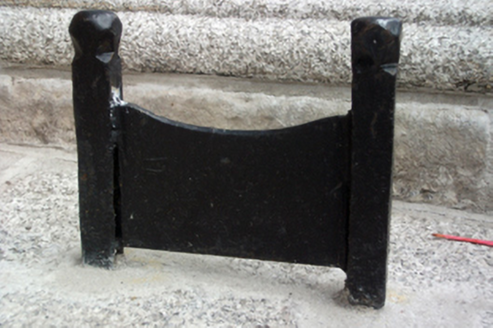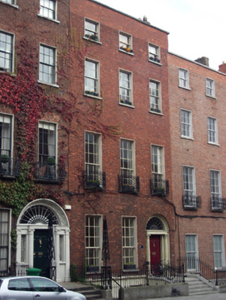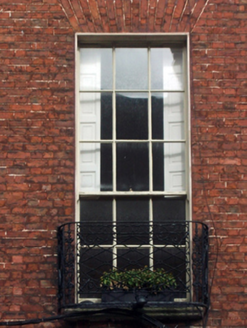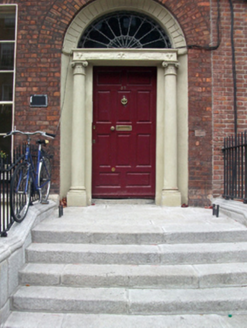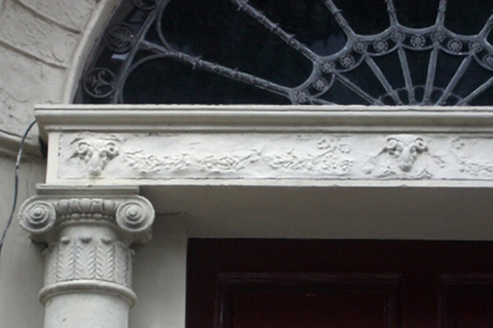Survey Data
Reg No
50010978
Rating
Regional
Categories of Special Interest
Architectural, Artistic
Original Use
House
Historical Use
Shop/retail outlet
In Use As
Office
Date
1775 - 1795
Coordinates
315895, 235174
Date Recorded
14/09/2011
Date Updated
--/--/--
Description
Terraced three-bay four-storey house over exposed basement, built c.1785. Now in use as offices. Pitched natural slate roof with hip to south behind rebuilt parapet wall with square granite ashlar coping. Stepped and rendered chimneystack with clay pots shared with No. 38. Red brick walls laid in Flemish bond with original pointing, eaves course being rebuilt, to moulded granite ashlar plinth course over rendered basement. Gauged brick flat-arched window openings with painted patent reveals and granite sills. Replacement timber sliding sash windows throughout, six-over-six pane to basement and second floors, nine-over-six pane to ground and first floors, six-over-six pane to second floor and three-over-three pane to top floor. Cast-iron balconettes to first floor. Painted stone doorcase comprising original ten-panel painted timber door flanked by engaged Ionic columns on plinth blocks supporting lintel cornice enriched with ram’s heads and swags surmounted by original peacock fanlight within stuccoed archivolt and having gauged brick voussoirs. Door opens onto granite platform with two cast-iron bootscrapers and four granite steps, bridging basement, enclosed to either side by cast-iron railings with newel posts and urn finials on moulded granite plinth wall. Matching gate to basement area.
Appraisal
This house is part of a terrace developed from 1768 as a result of commercial leases on the avenue leading to the Mount Eccles estate and in response to the expansion of the Gardiner Estate. The house is one of the grandest on the street and was built by Charles Thorp, the renowned stuccodore. It also retains good neo-Classical interiors with tripartite and multifoil ceilings as well as extensive composition ornamentation. The house once served as the home of a wine merchant, a solicitor, and in the twentieth century, the headquarters of the Falcon Press. The original pointing, correct fenestration and doorcase all add to the refined ambience of this remarkably intact enclave.
